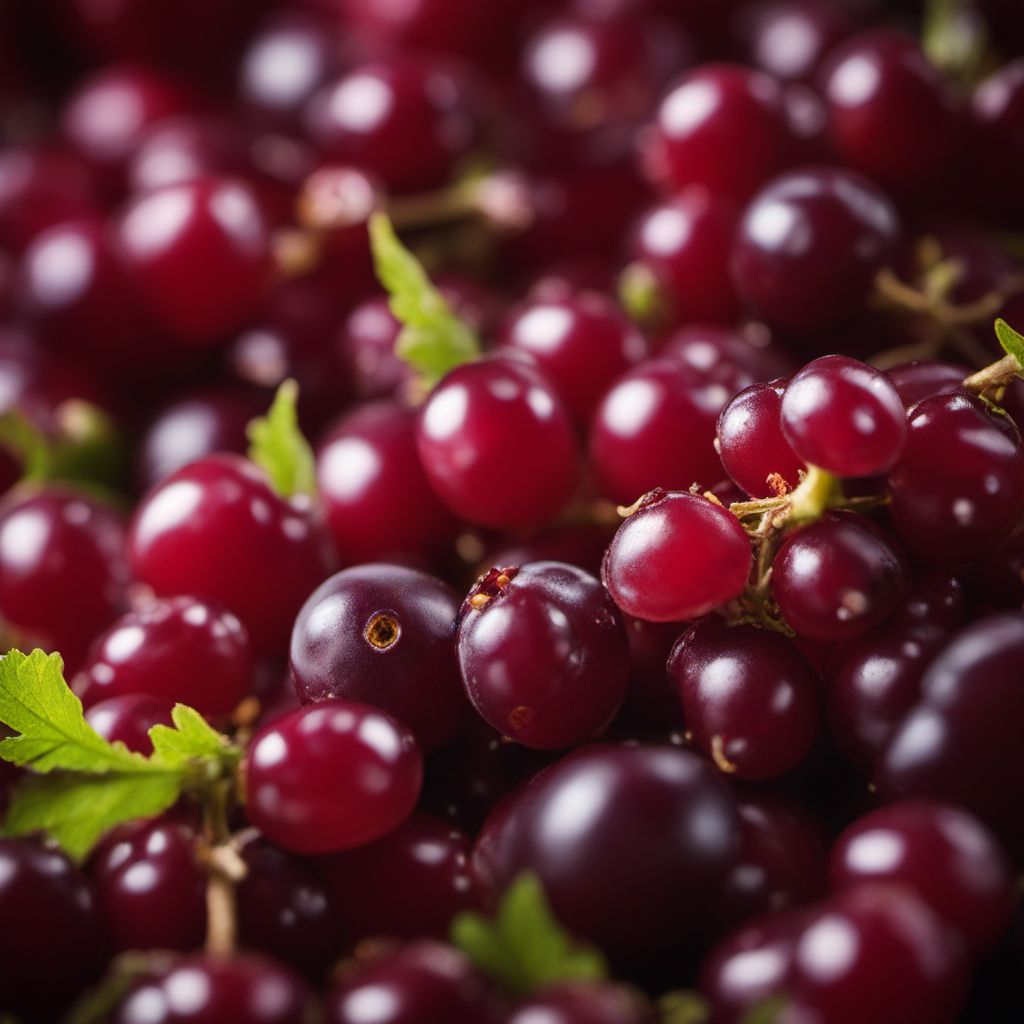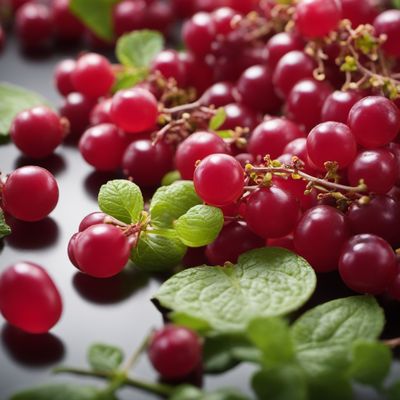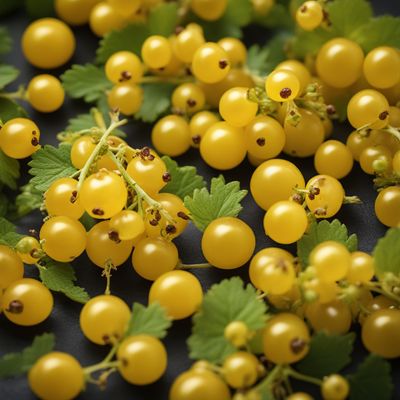
Ingredient
Native currant
The Indigenous Jewel
Native currant is a small, round fruit that ranges in color from deep red to purple-black. It has a tart and slightly sweet taste, with a texture similar to grapes. Its appearance is characterized by clusters of small berries, each with a glossy skin and tiny seeds. Native currant is commonly used in jams, jellies, sauces, and desserts, and its vibrant color makes it a popular choice for garnishing salads and cocktails.
Origins and history
Native currant is native to North America and has a rich history of use by Indigenous peoples. It has been used for centuries in traditional medicine and culinary practices. Native currant is often associated with the Pacific Northwest region of the United States, where it grows abundantly in the wild. Its cultural significance and connection to Indigenous communities make it a cherished ingredient in local cuisines and celebrations.
Nutritional information
Native currant is a good source of vitamin C and antioxidants. It is low in calories and fat, making it a healthy addition to various dishes.
How to select
When selecting native currants, look for berries that are plump, firm, and free from blemishes or mold. The color should be deep and vibrant, indicating ripeness. Avoid berries that are overly soft or shriveled. If purchasing from a farmers market, ask the vendor about the freshness and origin of the currants.
Storage recommendations
To store native currants, gently rinse them under cold water and pat them dry. Place the berries in a breathable container, such as a perforated plastic bag or a shallow container lined with paper towels. Store them in the refrigerator for up to one week. Avoid washing the berries until just before use to prevent premature spoilage.
How to produce
Native currants can be grown in home gardens or containers. They thrive in well-drained soil and prefer partial shade. Regular watering and pruning are necessary to maintain healthy plants. Native currants can also be propagated through cuttings or purchased as young plants from nurseries.
Preparation tips
Native currants can be used in a variety of ways. They can be enjoyed fresh as a snack or used in both sweet and savory dishes. Add them to salads, desserts, jams, jellies, sauces, or use them as a garnish for cocktails. Native currants can also be dried or frozen for longer-term storage.
Culinary uses
Native currants are commonly used in Pacific Northwest cuisine, particularly in dishes that celebrate local and Indigenous ingredients. They are often incorporated into traditional recipes such as pies, tarts, and syrups. Native currants are also popular in modern culinary creations, adding a burst of color and flavor to salads, sauces, and cocktails.
Availability
Native currants are commonly available in the Pacific Northwest region of the United States, particularly in areas where they grow wild. They can also be found at farmers markets and specialty grocery stores that focus on local and Indigenous ingredients.
More ingredients from this category » Browse all

Juneberries
The Sweet Delight of Juneberries

Myrtle berries
The Enchanting Berries of Myrtle

Salal
The Wild Berry: Salal

Aronia berries
The Mighty Antioxidant Powerhouse

Worcesterberries
The Tangy Delight: Worcesterberries

Other species and hybrids of genera Ribes and Vaccinium, not elsewhere mentioned
Exotic Berry Medley

Bilberries (generic)
The Secret Superfood: Unveiling the Power of Bilberries

Golden currant
The Fragrant Spice of Delight

Haskaps
The Marvelous Haskaps

Lingonberries and similar
The Tart and Tangy Delights: Exploring Lingonberries and Similar Berries

Sea buckthorns
The Tangy Treasure of the North

Jostaberries
The Tangy Delight: Unveiling the Secrets of Jostaberries